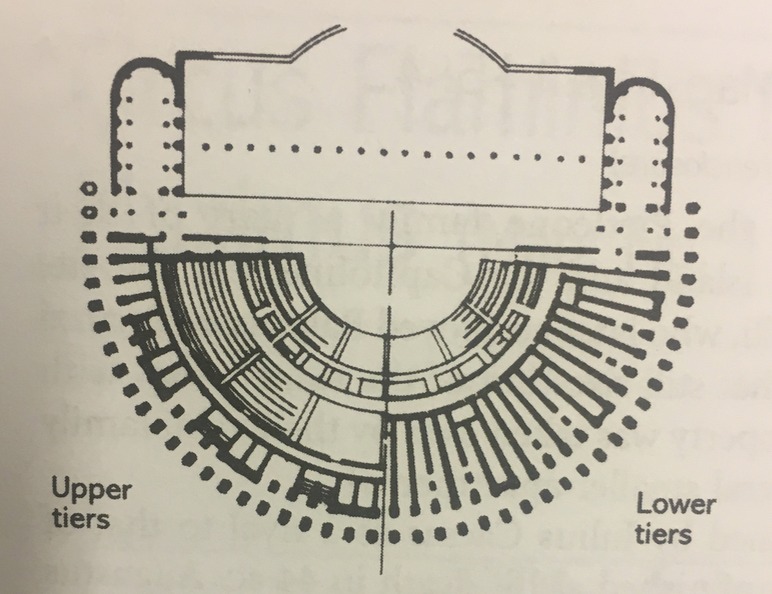Seating
The social structure of the seating arrangement influenced theatres built later in Italy and the Western portion of the empire.1 Augustus was the first to implement a permanent seating law that dictated where those of a certain social class were allowed to sit. Those with less influence and money were required to sit in the tallest tiers which had only wooden seats. The lower tiers had stone seats and a better view of the proceedings. The stairs that allowed visitors to pass through the different levels would have been filled with the general crowd on the ground level, and then would have broken off into smaller groups of people searching for their correct seats.
______________________________________________________________________________
1 Amanda Claridge, Judith Toms, and Tony Cubberley, Rome: An Oxford Archaeological Guide (Oxford: Oxford University Press, 2010), 275.
2 Claridge, Rome, 276.
